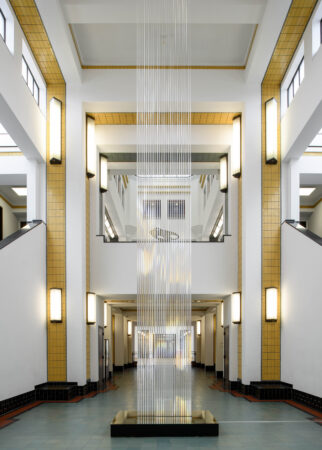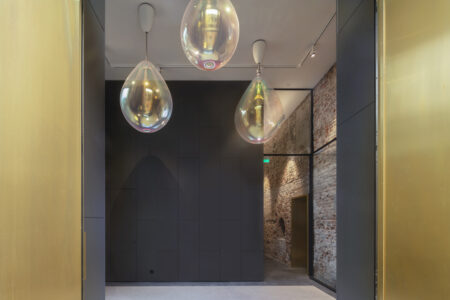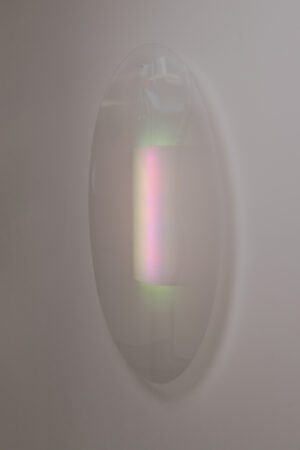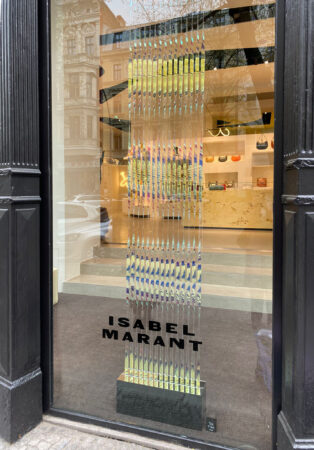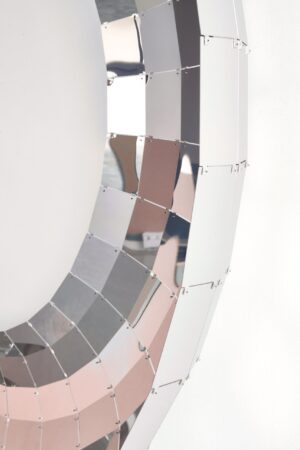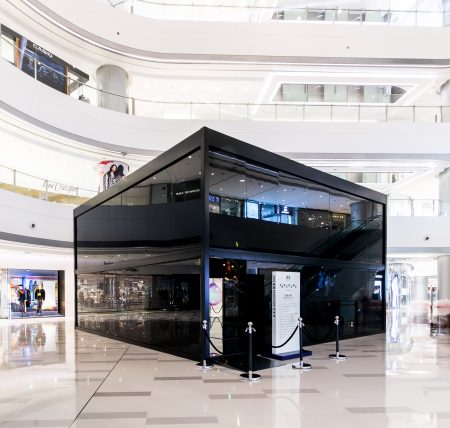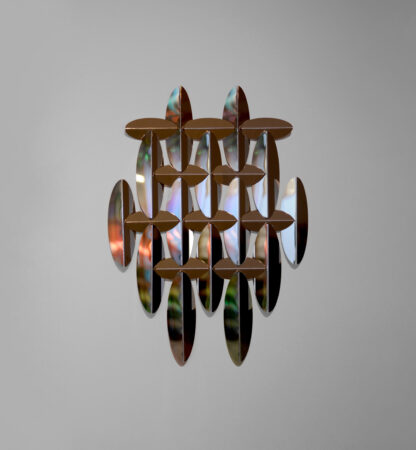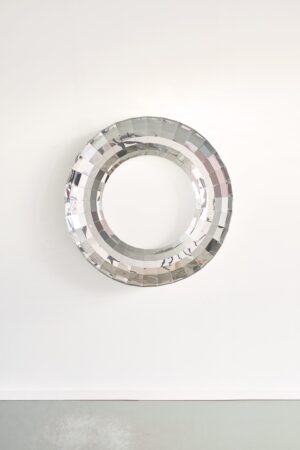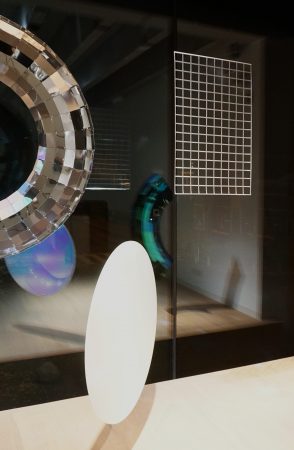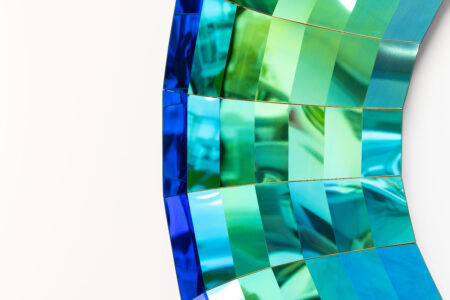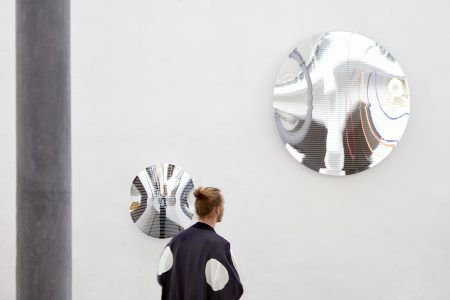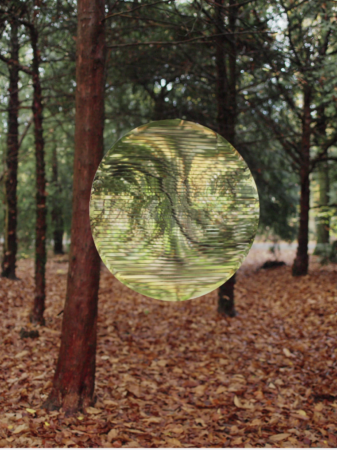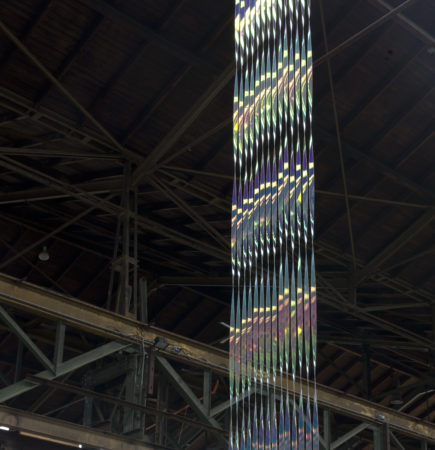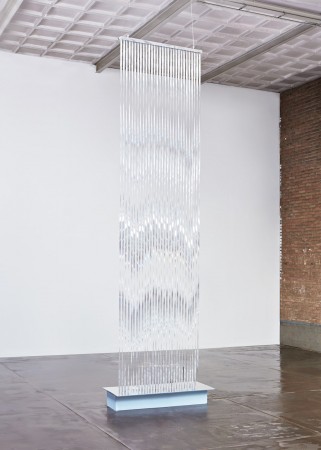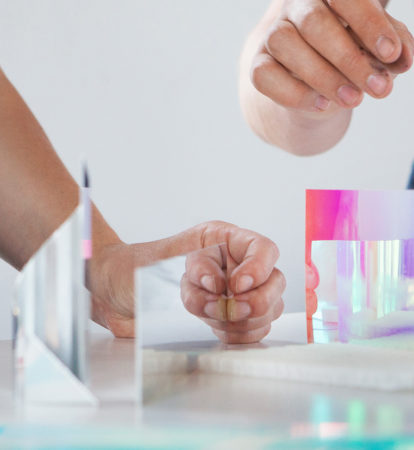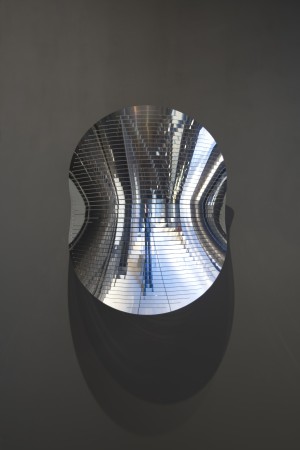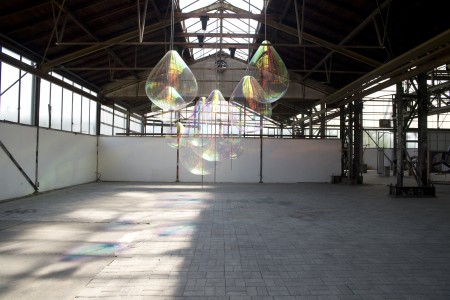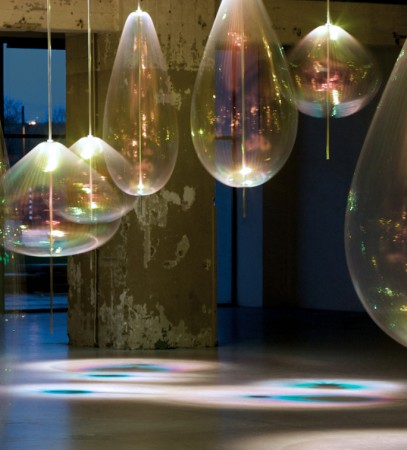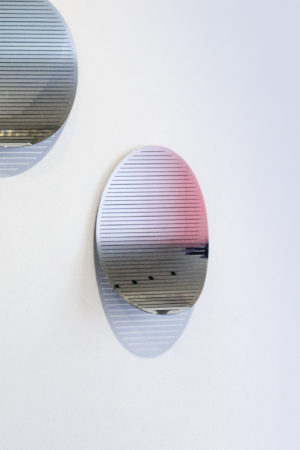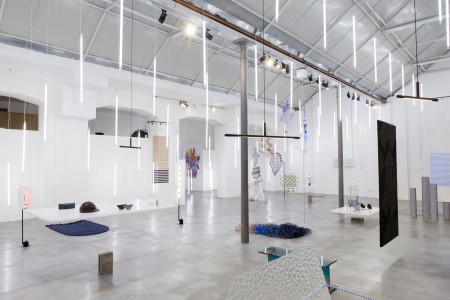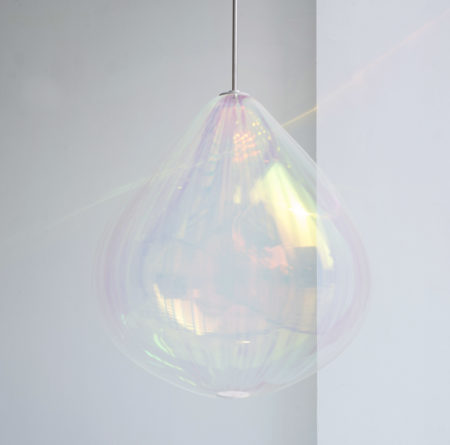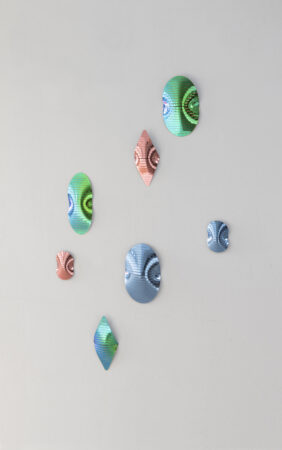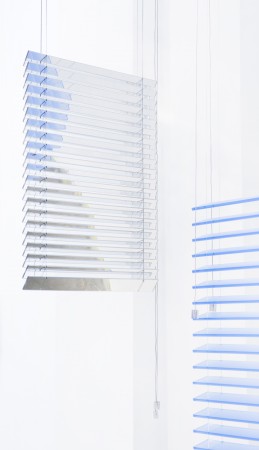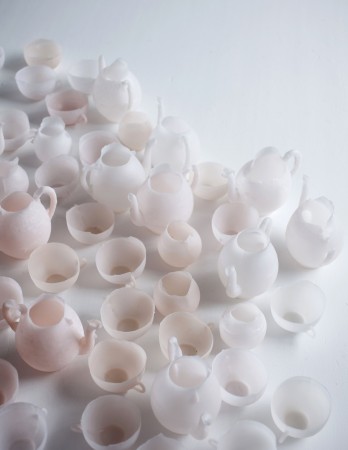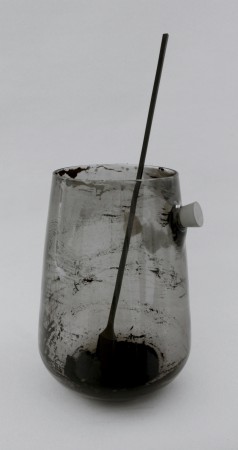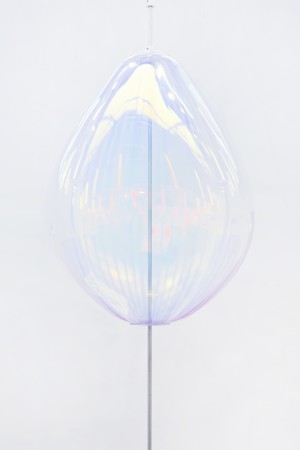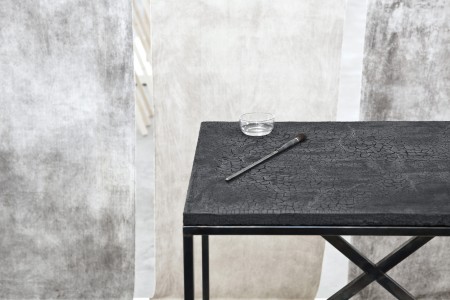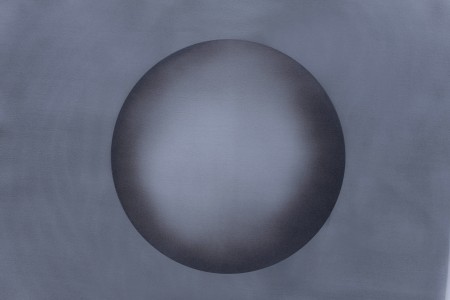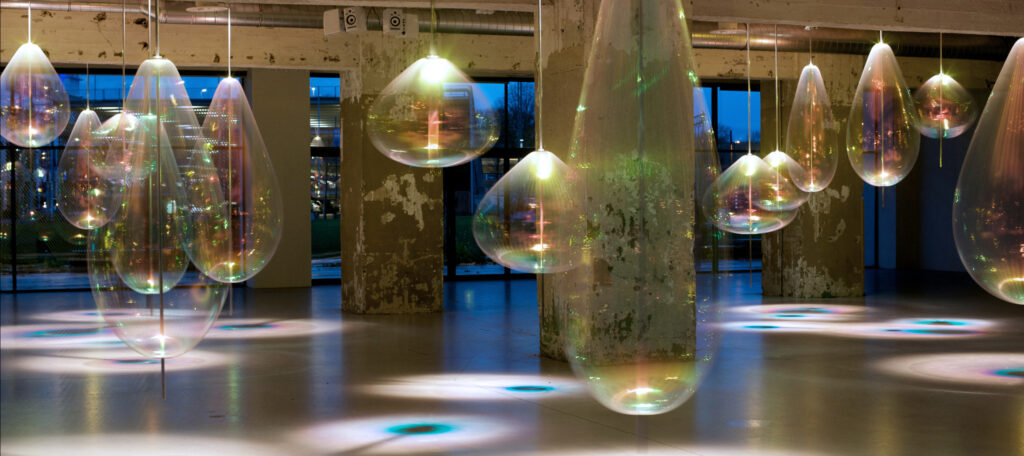
- Filter projects:
-
- No categories
objects of wonder
Our installation Reflecting Holons is traveling around the world. From New York to Singapore and from Paris to Chengdu. Every exhibition we create something unique, a dialogue between the work and the architecture. These images show our infinity magic box in Chengdu at IFS during the Parcours art route.
Permanent Reflecting Holons installation commissioned by NEMO Science Museum Amsterdam.
For this installation we developed a special choreographic. The Holons are able to respond to each other by accelerating. Wind is blowing through a swarm of bubbles. 2020
Technics: Adriaan de Man
www.nemosciencemuseum.nl
Math is a constant in our world, sometimes incomprehensibly large, abstract and at the same time very applicable and found in the smallest life on earth. In Cosmic view the surface is investigated, an evolution from the two-dimensional to a volume. A mix of abstractions and visualizations from the world of logic, the beauty of forms that exist around us. Cosmic view is a cocktail of objects, from gravitational surface to diatom, from the cosmos to microscopic cell, together a galaxy of objects. Worlds merge into a landscape of mathematically based sculptures.
The window of the Singer Laren provides an insight into another world. It creates a framework, a view on something new. Like a mirror, a suggestion of a passage, a vision, a new dimension. 2019
“The whole is larger than the part” Euclid of Alexandria 300 BC.
Thanks to Singer Laren, Gallery Pouloeuff, Keep an Eye foundation, Doeszevendzes.
As a rule, a mirror reflects its surroundings and copies what we want to see as reality. In contrast, ECHO mirrors create a new image that transforms reality. Mirror fragments reflect their surroundings and create a distorted image of what we would expect. 2018
.
We explore a world of wonders within the conception of working with material strips. Our twisting installation is the result of their experimental attitude, in which materials are treated with a sense of wonder. This enables us to reveal dynamic qualities within static materials. The prismatic surface expresses contrasting qualities, feeling both naturally fluid and mathematically precise, at the same moment.
On show during Dutch Design Week 2017 at Dutch Invertuals in collaboration with Luxaflex®.
Photography by Ronald Smits
A kinetic installation in between reality and imaginary. A glitch, untouchable and possibly hidden again in the blink of an eye. A play of colours, movement and reflection.
On show at the windows of de Bijenkorf Amsterdam from September 5th until October 1st. This installation will also be on show during Dutch Design Week Eindhoven at de Bijenkorf Eindhoven from Friday October 20th until Monday October 30th.
Comissioned by by the Room On The Roof, designed during our residency at the Bijenkorf Amsterdam. In collaboration with Rijksmuseum Amsterdam
www. roomontheroof.com
Material: Aluminum, acrylic glas, foil
Photography: John Kramer
A mirror is not only showing a reflection of it’s surrounding, it copies of what we intend to see as reality. Martens & Visser’s mirror is instead creating a new image which is added to the reality. Slices of mirror echo it’s surrounding, creating a distorted image of what we would suspect.
From April till July 2017 we were invited for a recidency at DordtYart. DordtYart is an art park, which is located on a cultural, industrial site in Dordrecht, the Biesboschhal, a former shipyard in the Stadswerven. Where visual contemporary arts is accommodated, not only in the form of exhibitions but as well to produce new work.
During a two month period we have been researching motion by transforming a two dimensional surface to a three dimensional object. Playing with slender strips of material is an ongoing research which stared in 2015 by the HUE-blinds project and was continued with the Holon project and still finds its way to new projects and works.
Reflecting Holons is an kinetic installation that immerses and surrounds its audience with ephemeral magic of light and movement. Jetske Visser and Michiel Martens call their mesmerizing objects they stumbled upon by experimenting with reflecting materials HOLONS. Long strips of oil like transparent foil combined with digital controlling become a visual entity reflecting the lights around them as if they were water drops. The installation creates a bridge between the analogue and the digital, as the movements of the Holons are digitally directed, and the physical shape is balancing between material aspects, physics and size.
The reflecting Holons are traveling the world for exhibitions in museums, light events and are in permanent use in museums, hotels and private collectors. Available in different sizes, contact us for price inquiry.
Commissioned by Artspace MU in Eindhoven. www.mu.nl
Technics: Adriaan de Man
Photography: Boudewijn Bollman
Thanks to Dutch Invertuals
FACET mirrors designed for CitizenM Hotels. A play of reflections, light and surrounding. Bending architecture and curving straight lines. Triggering the curiosity of every Hotel guest.
Material: high polished stainless steel.
2018
Dutch Invertuals is a collective of individual designers who are expanding the limits of their profession. Designers with different backgrounds, but with one thing in common: experiment is principal.
Martens & Visser joined Dutch Invertuals in 2011 and still collaborate.
Permanent Reflecting Holons installation commissioned by CitizenM hotels Paris. 2017
As part of Dutch Invertuals exhibition ‘Fundamentals’ we opened our archive and share 20 objects which inspire us. Objects we found on the street, from different countries, or samples designed by ourselves and colleague designers.
Photografy by EDHV and Raw Color
Concept Raw Color, Dutch Invertuals and Daphna Laurens.
On show during Dutch Design Week 2017.
Thanks to Lotte de Raadt, Kirstie van Noort and Ruben der Kinderen.
Colour, radiance and diffraction of multiple layers become one entity.
The semi-transparent layers divide spaces.
Photography: Martens & Visser, Raw Color, Floor Knaapen
In the movie ” Forgotten memory” you step into the world of dementia. An invisible and hidden world is exposed. How look everyday things through the eyes of someone suffering from dementia. How do they experience their environment? What is a teapot if you don’t know what a teapot is?
We always refer to the things we have learned, but what if we do not have anything to refer to?
Photography: Martens & Visser, Joost Goovers
Soot is impure carbon particles resulting from the incomplete burning of organic matter. While the black carbon in it is one of the biggest causes of the hothouse effect, pure carbon molecules are present in all known life forms and essential to all living systems.
Martens & Visser use this coal-black material as a fabric dye. A set of instruments is used as tools for collecting and processing the soot. The pigment is collected by burning oil inside the lamp.
*’Roet’, Dutch for soot. Photography: Martens & Visser, Raw Color
Multiple slender strips combined in a moving object. The work investigates refracting, reflecting, light and color. The products capture light and glow. By putting the objects in motion, the different strips appear to melt into a liquid whole.
“It is the curiosity about the unknown, new forms, new materials, the desire for innovation that pushes us forward.”
Technics: Adriaan de Man
Photography: Floor Knaapen, Daphna Laurens
Thanks to Dutch Invertuals
The Skin Cabinets are originated out of a research to find a balance in fluid forms and rigid structures. The metal frame works are very dominant in lines, form and material. Around this hard skeleton the flexible skin of plastic, wraps itself in a natural fluid way. I choose a strong material used in the packaging industry because of its extreme abilities to shrink forming the nice curves and shapes and creating the fragility of the whole
Soot is impure carbon particles resulting from the incomplete burning of organic matter. While the black carbon in it is one of the biggest causes of the hothouse effect, pure carbon molecules are present in all known life forms and essential to all living systems.
Martens & Visser use this coal-black material as a pigment in her fabric dye by collecting layers of soot created by burning oil inside a the lamp. The color intensity is determined by the number of hours the lamp burns and the strength of the fixative used. The textile industry is one of the most polluting of all industries, and the appropriation of a notorious pollutant for the coloring process bears witness to large-scale environmental issue.
*’Roet’, Dutch for soot.
Photography: Martens & Visser, Raw Color
Because of the substantial water consumption, the chemical dyes and worldwide transport, the textile industry is a serious pollutant. Martens & Visser studied new production methods using locally sourced materials. Excess and waste materials from the local industry around National Park the Biesbosch, combined with natural resources, have formed the starting point for the yarns, dyes and new dying techniques. Raw Materials, collection Biesbosch is an industrially produced, locally sourced collection of fabrics.
Photography: Martens & Visser, Joost Goovers
Steam gave rise to an industrial revolution. It created opportunities for machine-produced products and new speeds in transportation. For the textile industry steaming became a method to fixate the dye in the fabric.
The project ‘Steam’ uses these known qualities of water vapour to simultaneously create and fix the print onto the fabric. Unlike contemporary print methods, where intricate details and sterile regularities are dominant, ‘Steam’ demonstrates an enchanting dialogue between control and coincidence. The created patterns and shapes are the imprint of the steam on the fabric, records of an ephemeral moment
Commissioned by the Textile Museum Tilburg
Photography: Martens & Visser, Raw color
Thanks to: www.mirte-engelhard.nl and Textile Museum Tilburg

